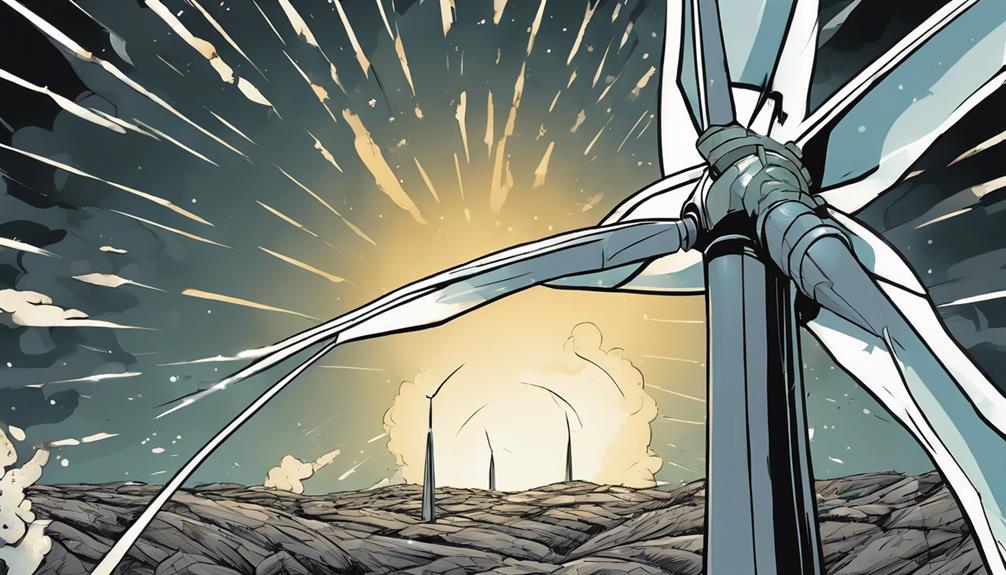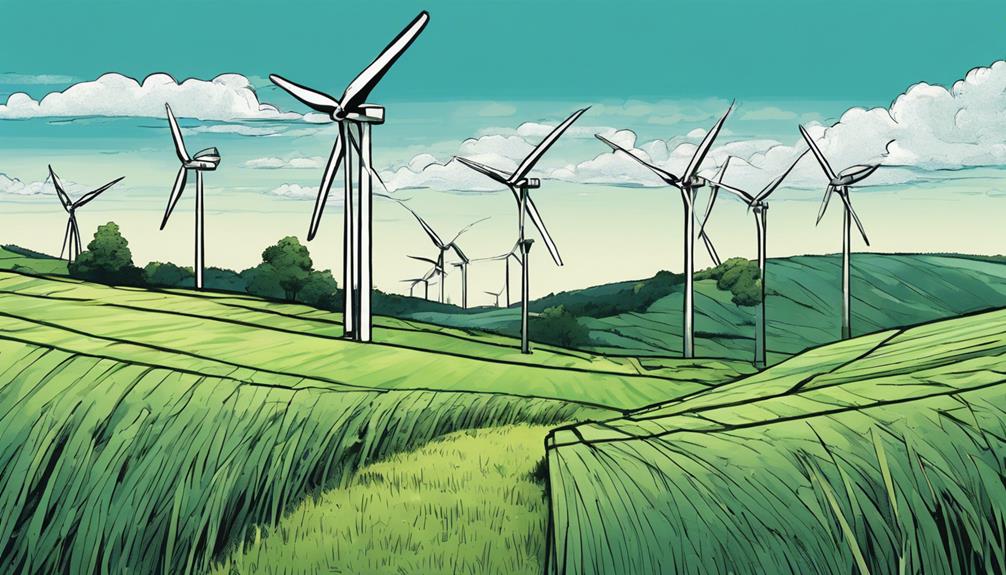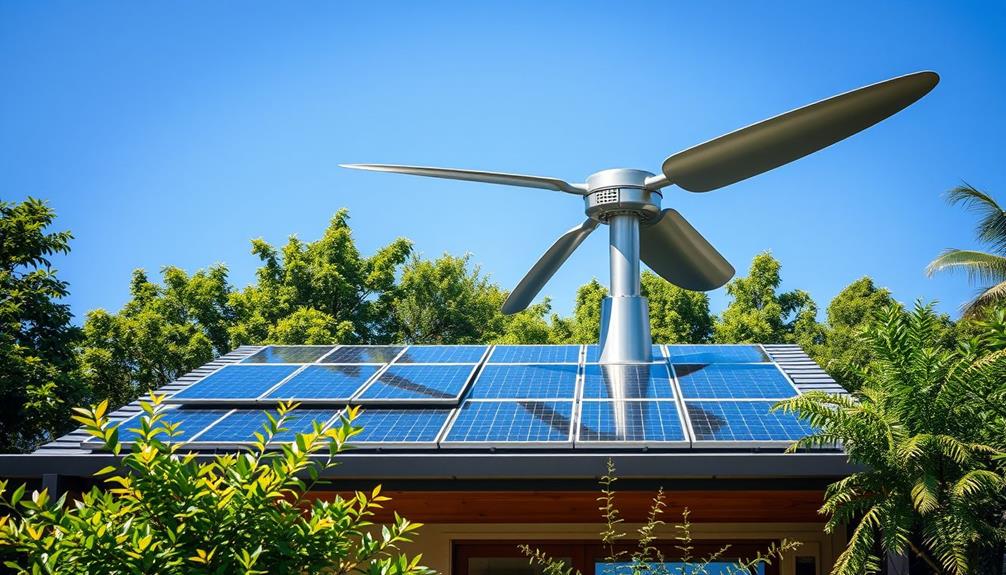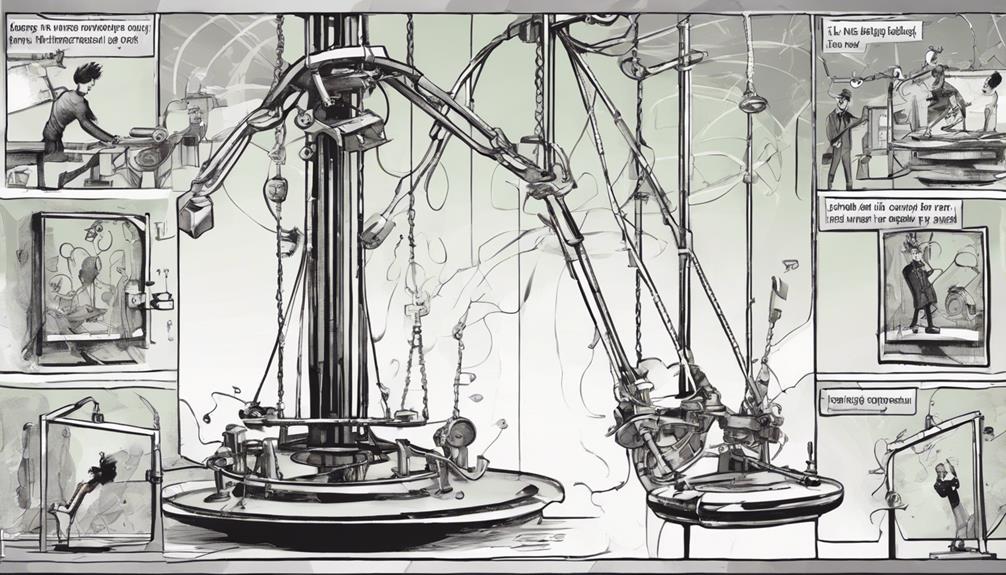When it comes to wind turbine technology, I've learned that a well-designed dump load is essential. It safeguards turbine components from damage, ensuring the system operates safely and efficiently. A dump load's purpose is to act as a resistive load, converting surplus power into heat. Selecting the right materials, like stainless steel or copper, is crucial. Building a dump load requires resistors, a heat sink, and a fan, all working together to protect the turbine. Proper installation and heat dissipation are also key. By mastering dump loads, I've come to appreciate their importance in guaranteeing system safety – and there's more to explore on this essential component.
Key Takeaways
- Dump loads protect wind turbine components from damage by safely converting surplus power into heat, ensuring efficient and safe operation.
- Selecting heat-resistant, corrosion-resistant materials like stainless steel, copper, and galvanized steel is crucial for dump load effectiveness.
- A well-constructed dump load with resistors, heat sink, and fan ensures reliable operation, efficient heat management, and turbine protection.
- Proper installation, including matching power ratings, parallel resistor connection, and grounding, is essential for smooth turbine operation and protection.
- Efficient heat dissipation, achieved through heat sink material selection and fan installation, prevents component failure and maintains system efficiency.
Understanding Dump Load Purpose
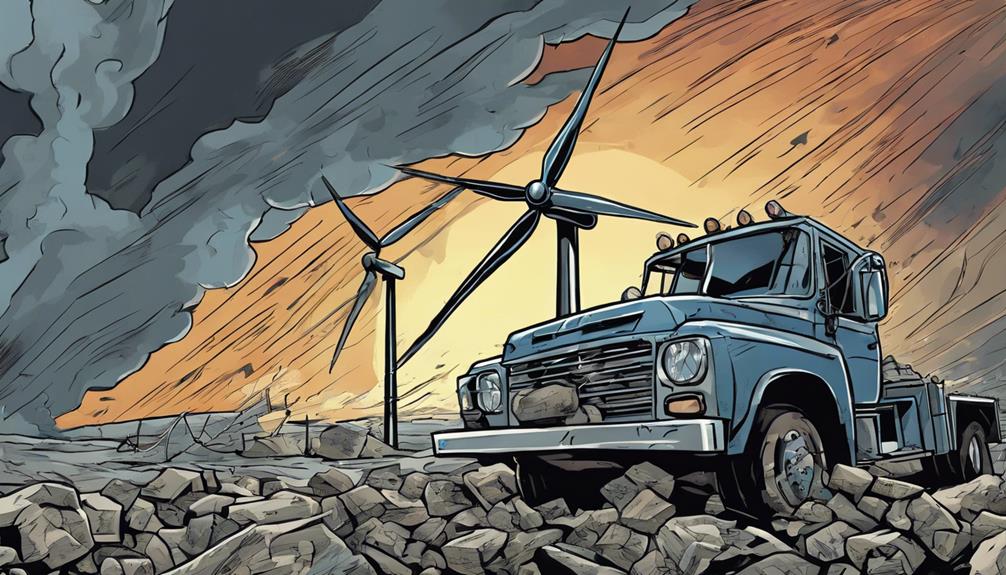
As I explore the world of wind turbines, I've come to realize that a dump load serves a significant purpose: to safeguard the turbine's components from damage caused by excess power generated during high wind conditions.
Essentially, it acts as a resistive load that converts surplus power into heat, preventing overheating and potential damage to the turbine's components.
Calculating the dump load's power rating is important to handle the turbine's maximum power output. By doing so, the dump load guarantees the wind turbine system operates safely and efficiently, maintaining its stability and longevity.
In short, a dump load is essential for protecting the turbine from excessive power and ensuring its peak performance.
Selecting Ideal Materials
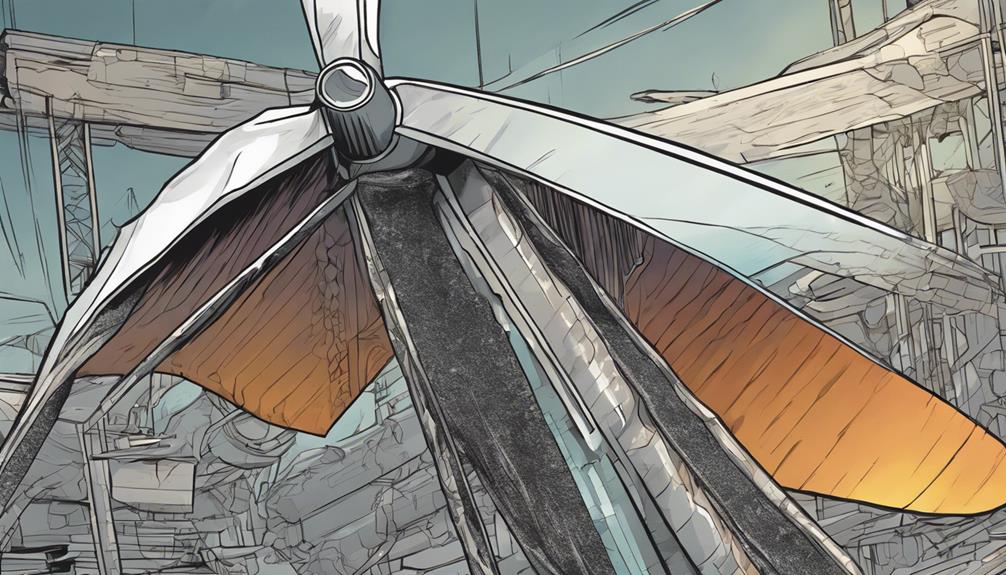
When constructing a dump load, I require materials that can withstand the harsh conditions and efficiently dissipate excess energy, which is why I focus on heat-resistant, electrically conductive, and durable materials. The appropriate materials guarantee the dump load's effectiveness and longevity in the wind turbine system.
| Material | Properties |
|---|---|
| Stainless Steel | Heat-resistant, corrosion-resistant |
| Copper | High electrical conductivity |
| Galvanized Steel | Sturdy, corrosion-resistant |
I take into account factors like heat resistance to prevent distortion, excellent electrical conductivity for effective energy dissipation, and sturdiness to endure harsh weather conditions. By choosing the correct materials, I can construct a dependable dump load that safeguards my wind turbine system from harm.
Building a Dump Load

I begin building my dump load by gathering essential components, including resistors, a heat sink, and a fan, to guarantee efficient heat dissipation and reliable operation.
Next, I connect the resistors in parallel to handle high power output from the wind turbine. This configuration guarantees even distribution of the load, preventing individual resistor overloads.
I then attach the resistors to the heat sink, which is designed to efficiently dissipate heat generated by the excess energy.
Key Installation Steps
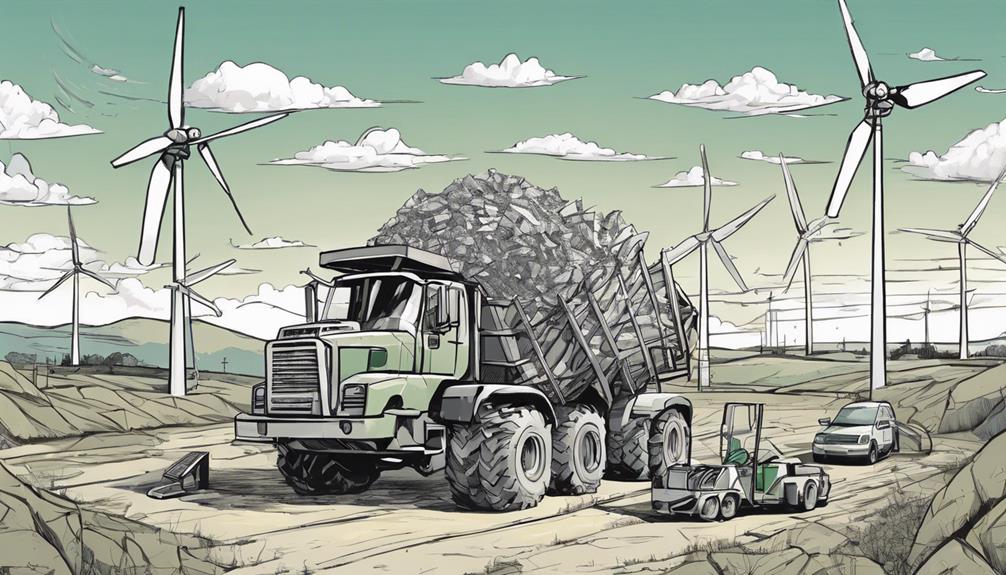
With my dump load built, I now focus on installing and connecting it to my wind turbine system to guarantee smooth operation and protection.
I confirm the dump load's power rating matches or exceeds the turbine's maximum power output to prevent overheating.
Next, I connect the resistors in parallel to evenly distribute the load and prevent individual resistor overloads.
I also install fuses and circuit breakers to protect the system from overloads and short circuits.
Proper grounding is essential, so I make sure to ground the dump load correctly to avoid electrical hazards.
Ensuring Efficient Heat Dissipation
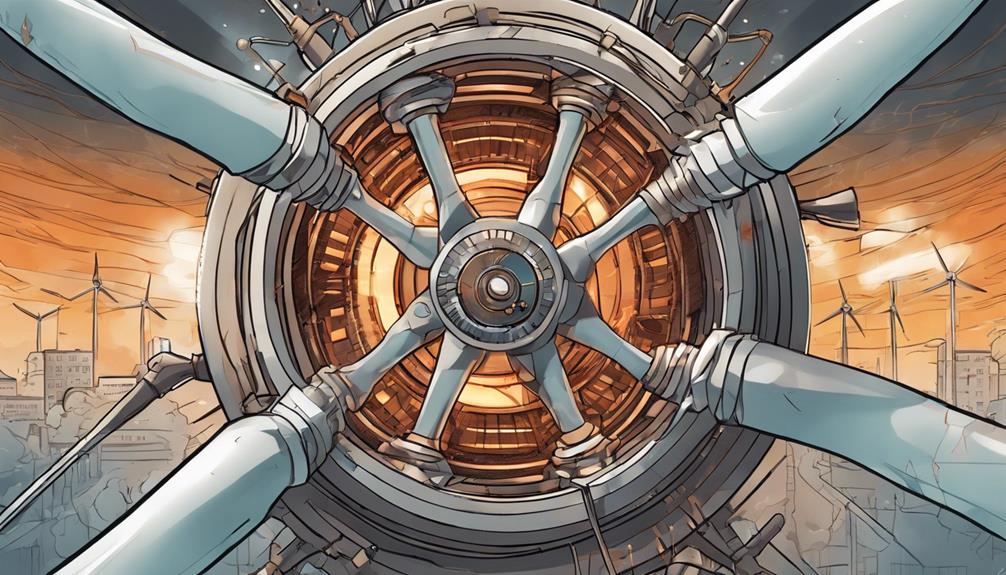
Ensuring Efficient Heat Dissipation
To prevent overheating and guarantee the dump load's longevity, efficient heat dissipation is essential, and I achieve this by attaching the resistors to a heat sink and installing a fan for enhanced airflow and cooling. This setup allows the dump load to operate within a safe temperature range, even during extended periods of high wind conditions. Proper heat dissipation is critical, as excess heat can lead to component failure and reduced system efficiency.
| Heat Sink Material | Thermal Conductivity (W/mK) |
|---|---|
| Aluminum | 237 |
| Copper | 386 |
| Stainless Steel | 16.2 |
Protecting Turbine Components
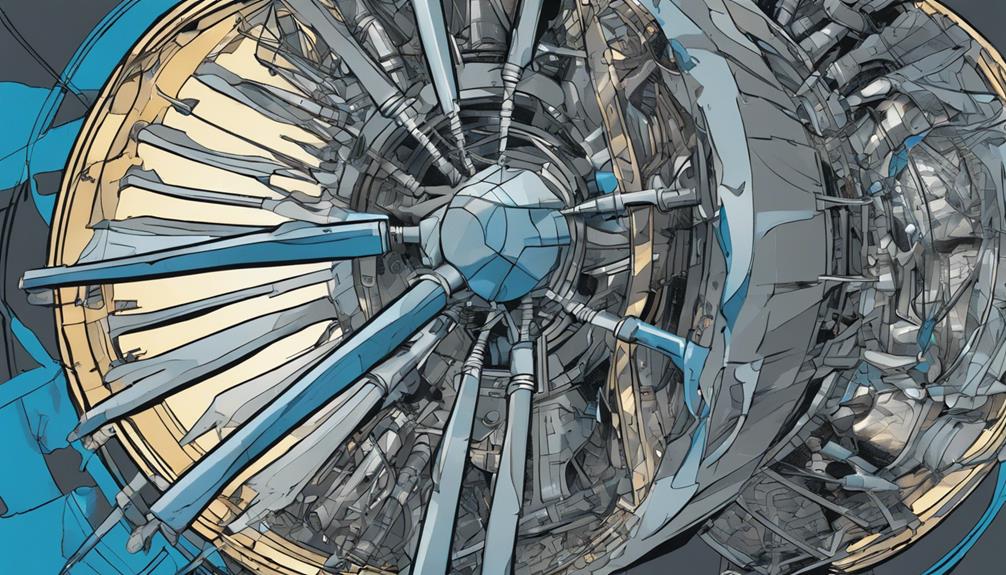
By efficiently dissipating excess energy, I can now focus on protecting turbine components from damage caused by high winds and power surges.
A dump load plays a pivotal role in safeguarding these components. During high wind conditions, the turbine generates excess power that can cause damage to its components if not absorbed. A dump load acts as a shock absorber, dissipating this excess energy and preventing damage.
Its capability to handle high power output guarantees that the turbine's components, such as the generator and gearbox, remain safe and operational.
Guaranteeing System Safety
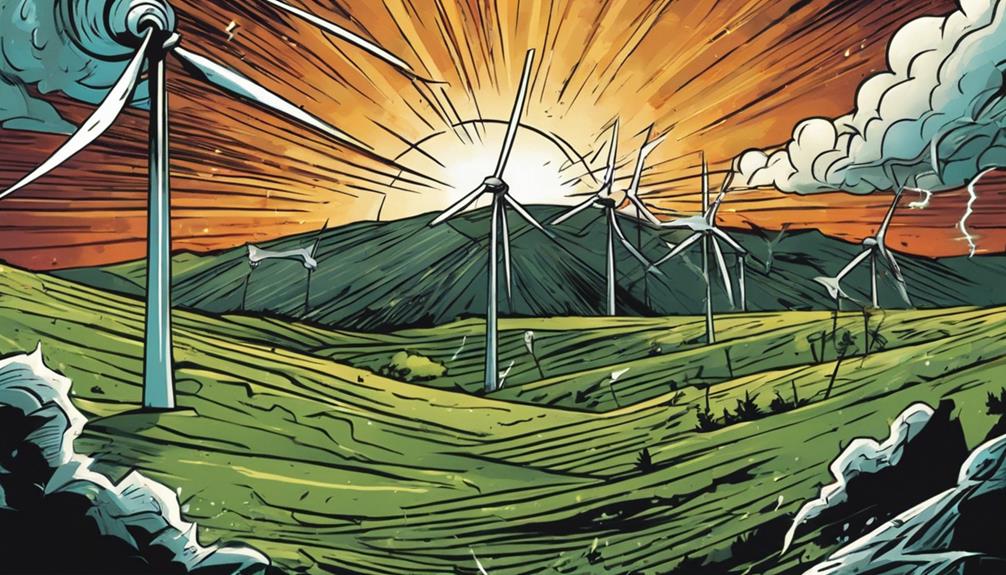
My dump load's ability to absorb excess energy protects the entire wind turbine system from electrical hazards and overheating, allowing me to operate it with confidence.
I make sure the dump load is properly installed and connected to prevent any potential risks. This includes selecting resistors with a wattage rating that matches or exceeds the turbine's power output, connecting them in parallel to evenly distribute the load, and installing fuses and circuit breakers for added protection.
Proper grounding of the dump load is also essential to avoid electrical hazards. By following these steps, I can guarantee the safety and efficiency of my wind turbine system, giving me peace of mind and maximizing its performance.
Frequently Asked Questions
Can a Dump Load Be Used for Other Renewable Energy Systems Besides Wind Turbines?
"Good question I think a dump load can be applied to other renewable energy systems, like solar panels or hydroelectric power, to absorb excess energy and prevent damage to components."
How Often Should the Dump Load Be Inspected and Maintained for Optimal Performance?
Like a steady heartbeat, regular inspections keep my dump load in top shape. I inspect it every 6-12 months to guarantee peak performance, checking for signs of wear, corrosion, or overheating, and performing minor repairs as needed.
Are There Any Specific Certifications or Standards for Dump Load Components and Installation?
I've got to confirm my dump load components meet specific certifications and standards, like UL or IEC, to guarantee safety and efficiency; improper installation can lead to system failures or even fires.
Can a Dump Load Be Designed to Recover Excess Energy Instead of Dissipating It as Heat?
"I wonder if a dump load can be designed to recover excess energy instead of wasting it as heat? Technically, it's possible to modify the dump load to store or convert excess energy, but it's a complex task."
Are There Any Alternative Methods to Resistive Loads for Handling Excess Wind Turbine Power?
I've wondered about alternative methods to resistive loads for handling excess wind turbine power. Capacitive loads, kinetic energy storage, and grid-tied inverters are promising alternatives, offering potential energy recovery and reduced waste.
Conclusion
As I mastered the art of wind turbine dump loads, I realized it's like taming a wild horse – harnessing its power requires skill and finesse.
By understanding the purpose, selecting the right materials, and building it with care, I was able to tame the excess energy and reveal the full potential of my wind turbine.
Now, my system runs smoothly, efficiently, and safely, a true proof of the power of mastery.
